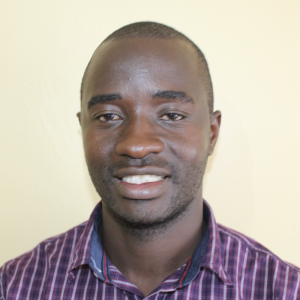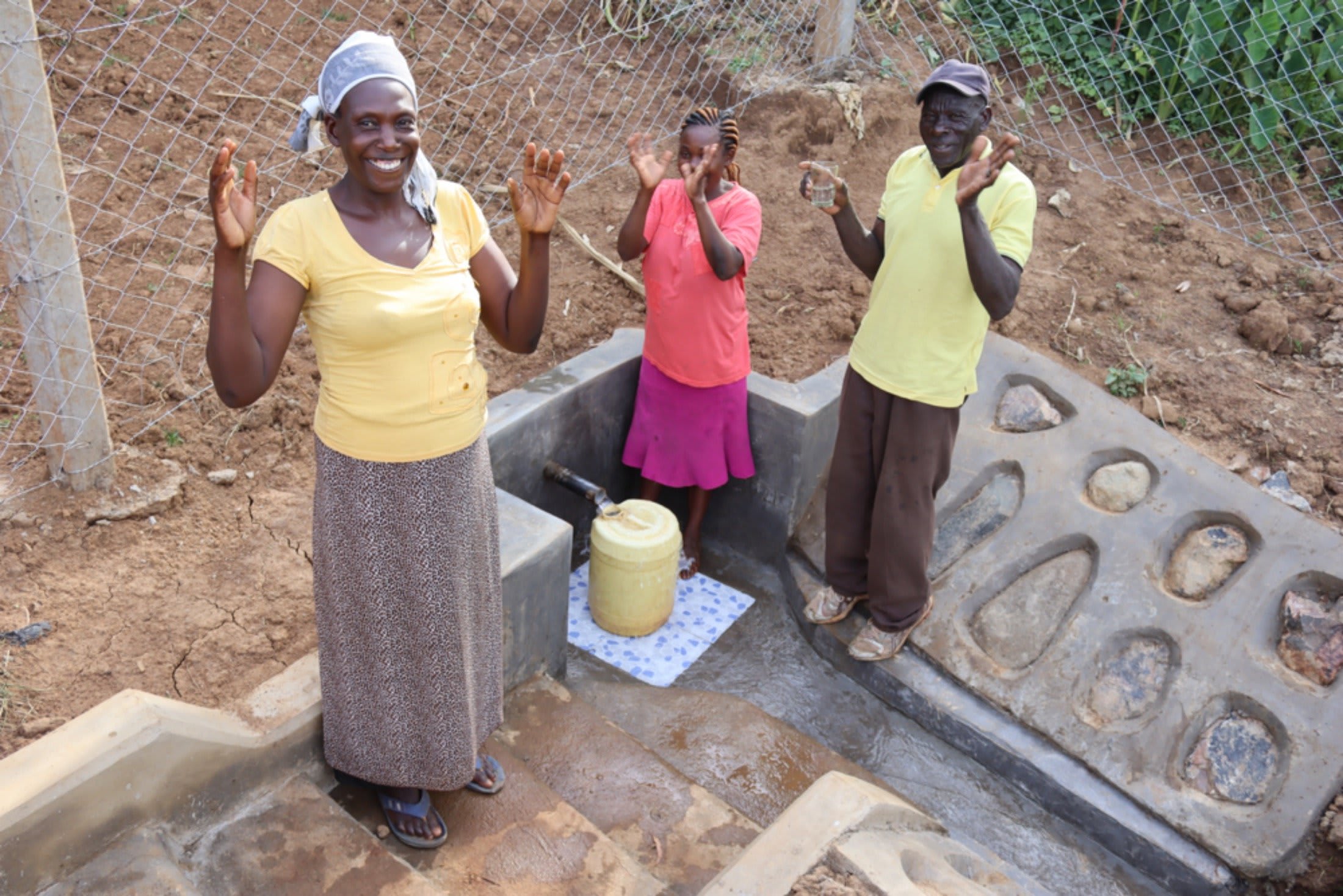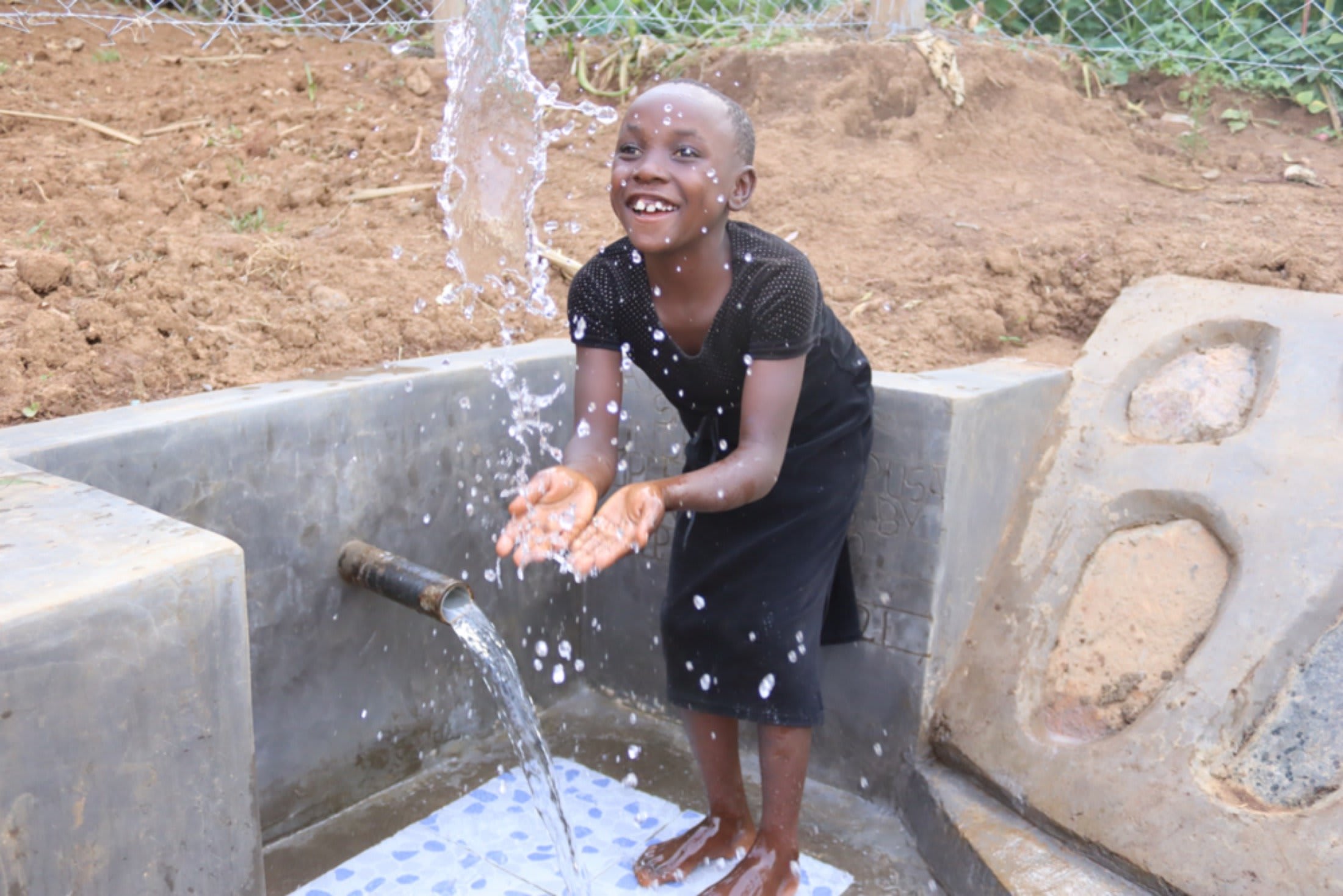The Shisasari Itumbu area has an evenly undulating topology with a cool climatic condition free from noise pollution. It is also green and very vegetative, with both indigenous and exotic tree varieties.
The area has a good road network, and most families practice mixed farming on a small scale. People here typically raise a few dairy cows for subsistence use. They also get farmyard manure from these domesticated animals for use in their farms. They plant a variety of crops such as yams, cassava, potatoes, and maize.
Shisasari Itumbu community members are well-coordinated and enjoy working together. They care a lot about each other's welfare and are tied together by a common belief in God and other sociocultural activities. The area is wet and most springs here are high yielding.
Mathias Juma Spring, which serves 119 people in this community, is no exception to being a spring that produces a lot of water. People seek this spring out for its dependability, even during one of the most severe droughts in 2019. But Mathias Juma Spring is open to contamination and not easy to access, costing community members their health, money, time, and effort.
The fear of drinking water whose quality is not known and its negative health consequences are the main concern of the spring users. In its open state, Mathias Juma Spring's water mixes with runoff from the rains that carry farm chemicals, residues from animal waste, and soil directly into the water people collect. There are widespread reports of stomachache, sore throat, and diarrhea among the families who use this spring water.
These illnesses often worsen during rainy seasons when runoff and washout are at their height, carrying more pollution into the spring. The hospital visits and medicines required to treat these and other water-related illnesses are expensive, draining families of their financial resources that were intended for other needs. When people get sick from drinking the spring water, adults miss out on key productive and income-earning time, and kids have to stay home from school. Children can easily fall behind in their lessons after missing a week or more each time they are sick.
The other main concern at the spring is lack of accessibility. First, there are no stairs to help guide the patch into and out of the spring. This can make it difficult for the elderly, young children, and women who are pregnant to easily get to the spring.
"Because it lacks staircases, people always find it difficult to fetch water. This affects old women and your children when they go to fetch water. They do complain of the bad access point that strains them," said 61-year-old Dorina Akhukani Juma.
"Children of my age normally fall back into the pool of water after collecting water from the spring. We slide due to the bad access point," added Justus, a primary school-aged boy.
Then, there is the trouble getting into and out of the spring's drawing point. It is narrow, overgrown, and people must stand in several inches of mud and water to reach it. The drawing point was improvised by the community. It is a discharge pipe wedged directly into the earth between rocks and mud the community tried to build up around it.
But without a protected catchment area behind it, the pipe still captures only a fraction of the spring's yield while a lot of water flows around it. This slows people down as they wait for their containers to fill, consequently wasting their time as lines form to fetch water.
"Our water containers take a long time to be filled because much water is not captured by the improvised pipe we have," Justus added.
The only other year-round water source this community has is another spring we protected in the area called Luseka Spring. But Luseka Spring is further away from the 119 people who would prefer to use Mathias Juma Spring, eating up more of their time if they choose to take the longer walk. And with more than 2,400 people who call this area home, Luseka Spring is quickly overburdened by the extra people who come to collect water.
Protecting Mathias Juma Spring will help reduce the stress on the families relying on Luseka Spring and make a new source of clean water available to people at Mathias Juma Spring.
What We Can Do:
Spring Protection
Protecting the spring will help provide access to cleaner and safer water and reduce the time people have to spend to fetch it. Construction will keep surface runoff and other contaminants out of the water. With the community’s high involvement in the process, there should be a good sense of responsibility and ownership for the new clean water source.
Fetching water is a task predominantly carried out by women and young girls. Protecting the spring and offering training and support will, therefore, help empower the female members of the community by freeing up more of their time and energy to engage and invest in income-generating activities and their education.
Training on Health, Hygiene, COVID-19, and More
To hold trainings during the pandemic, we work closely with both community leaders and the local government to approve small groups to attend training. We ask community leaders to invite a select yet representative group of people to attend training who will then act as ambassadors to the rest of the community to share what they learn. We also communicate our expectations of physical distancing and wearing masks for all who choose to attend.
The training will focus on improved hygiene, health, and sanitation habits in this community. We will also have a dedicated session on COVID-19 symptoms, transmission routes, and prevention best practices.
With the community’s input, we will identify key leverage points where they can alter their practices at the personal, household, and community levels to affect change. This training will help to ensure participants have the knowledge they need about healthy practices and their importance to make the most of their water point as soon as water is flowing.
Our team of facilitators will use a variety of methods to train community members. Some of these methods include participatory hygiene and sanitation transformation, asset-based community development, group discussions, handouts, and demonstrations at the spring.
One of the most important issues we plan to cover is the handling, storage, and treatment of water. Having a clean water source will be extremely helpful, but it is useless if water gets contaminated by the time it is consumed. We and the community strongly believe that all of these components will work together to improve living standards here, which will help to unlock the potential for these community members to live better, healthier lives.
We will then conduct a small series of follow-up trainings before transitioning to our regularly scheduled support visits throughout the year.
Training will result in the formation of a water user committee, elected by their peers, that will oversee the operations and maintenance of the spring. The committee will enforce proper behavior around the spring and delegate tasks that will help preserve the site, such as building a fence and digging proper drainage channels. The fence will keep out destructive animals and unwanted waste, and the drainage will keep the area’s mosquito population at a minimum.

 Protected Spring
Protected Spring
 Rehabilitation Project
Rehabilitation Project



































